There are many inorganic fibers in industrial fiber sector, such as: glass, carbon, metal, and ceramic. Ceramic fiber is one of the most small-dimension filament fiber in the textile and other industry. Let’s have a look at the details of ceramic fibre.
What is Ceramic Fiber?
Ceramic Fibre is a man-made synthetic fiber produced fromsmall-dimension filament composed of high purity aluminosilicate materials. It also known as ‘Ceramic Wool’ or “refractory material”. Cause it has a heat-resistant property white and odourless substance.
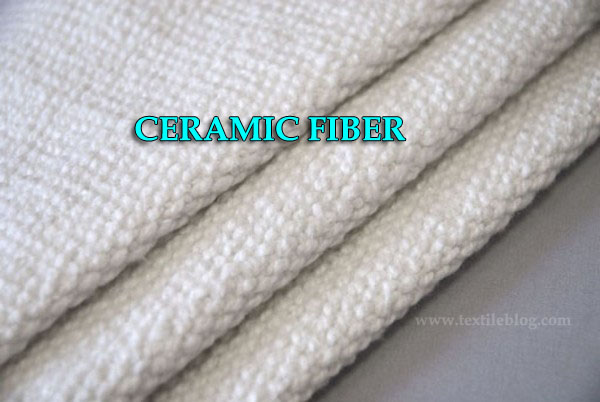
Ceramic fiber is suitable for high temperature applications up to 2300°F. It comes in numerous applications including different ceramic fibre products such as: flame retardant fabric, lightweight units for electrical, thermal and sound insulation, filtration at high temperatures, protective blanket, and so on.
Chemical composition of ceramic fibre:
Al2O3 + SiO2 >97% (Al2O3 47%); Fe2O3< 1%
Properties of Ceramic Fiber:
| Characteristics | Properties |
| Fiber Diameter | 3 – 4.5 microns |
| pH Range | 2-12 |
| Thermal conductivity | 0.10 – 0.12 W/m.K at 100°C |
| Maximum temperature | 1700 °C |
| Fiber Shrinkage (1800°F, 3h) | < 3.5% |
| Working Temperature | 1,800 °F. for Continuous Use, 2300 °F Maximum |
| Specific Heat (@2000°F) | 0.27 Btu/lb °F |
Production Process of Ceramic Fiber:
1. CVD technique:
CVD is a common production process to produce ceramic fibres. This process, deposition of a material’s vapor phase on a core substrate. That is in the form of a monofilament. Tungsten and carbon C-type monofilaments are used as the core component. Whole CVD processes are shown in the fig. In the vapor phase, deposited material is the separation product of the gases.
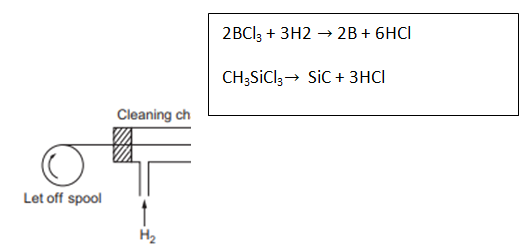
2. Melt spinning technique:
In the traditional melt-spinning production process, the precursor materials are melted and subjected to spinning process. Oxides in the molten state are forced throughout the nozzles during spinning process. At relatively high pressure it’s solidified by cooling.
3. Slurry spinning:
This technique is developed to avoid lakings of melt-spinning method. Both oxide and non-oxide fibers are manufactured via spinning of ceramic slurries. In this process, the slurry is composed of three basic components: alumina particulates, suspension of alumina precursor, and organic polymer.
4. Chemical conversion:
Chemical conversion production process approach is based on the conversion of ceramic fibres into a different composition via chemical reactions. In this process, precursor fiber is subjected to the deposition of the external compound. That diffuses through the fiber surface. Final ceramic fibre exhibits the composition of desired chemical content, after the successful reaction.
C + Si → SiC
2C + SiO → SiC + CO
5. Preceramic polymer processing:
Ceramic fibre have different types of elements such as silicon, carbon, nitrogen, boron, etc. The idea of preceramic polymer processing is based on the combination these elements.
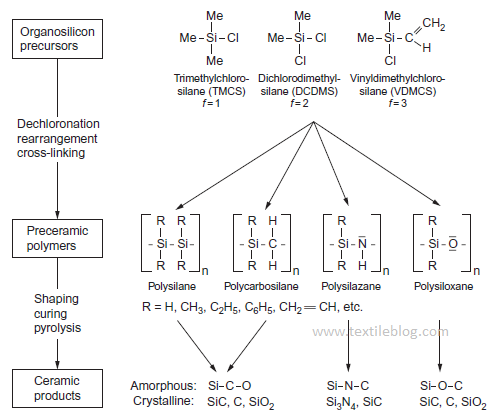
6. Single-crystal fiber production:
Single-crystal fiber production is used to fabricate specific type of products used in optical and electronic industries. Film-fed growth (FED) is one of common techniques to manufacture single crystalized ceramide with various shapes that grow from melt, solution, and vapor.
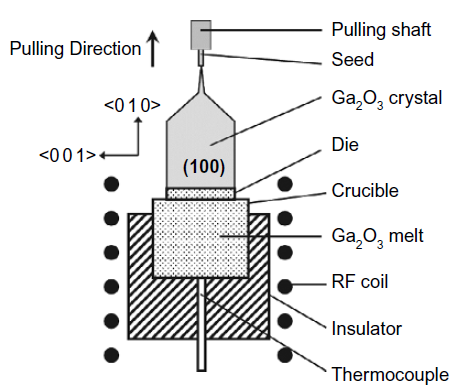
Applications of Ceramic Fibre:
Ceramic fibers are basically used in two fields of application:
- Thermal insulation material
- Reinforcement of metals or ceramics.
Typical application of ceramic fiber are:
| Typical Applications | Application Area |
| Aerospace Industry, Automotive Industry, Electrical Industry, Petrochemical Industry |
| Electronic Industry |
| Safety Industry |
| Aerospace Industry, Automotive Industry |
Table: Application Area of Ceramic Fiber
Common Application of Ceramic Fibre:
- High temperature insulation seals and gaskets.
- Thermal shield.
- Fire barrier.
- Fire Retardant Fabric.
- Protective blankets, and wrapping.
- Expansion joint fabric, safety clothing.
- Electrical insulation.
- Composite reinforcement.
- Sealing and insulation, and so on.
Advantages and Benefits of Ceramic Fiber:
- Low elongation rate
- Low retraction rate
- Excellent dielectric strength
- Excellent chemical resistance
- Excellent resistance to thermal shock
- Low thermal conductivity
- Low porosity, etc.
Special Uses of Ceramic Fiber:
1. Protective blanket:
Ceramic fiber is a versatile substance used for controlling high temperatures. Consequently, protective blanket from ceramic fibre made is perfect protection direct exposure to flames. It widely used in to manufacturing operations, power, metallurgy and petrochemical industries.
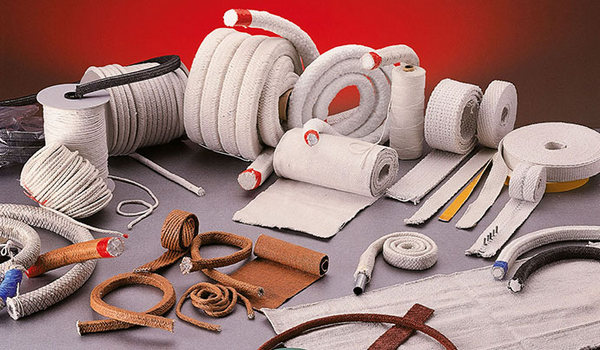
2. Fire retardant structure:
Ceramic fibre is commonly used in architecture to reduce the fire accident. Often, it’s used in fire doors, furnace insulation, special heat resistant containers, high-temperature pipes, and so on.
3. Rope:
This fiber has exterior strength to make a rope. It could be used in extreme thermal environment. Ceramic fibre made rope is also used as rope to support to attach various heat resistant structures.
4. Paper:
Ceramic fiber in paper form is ideal for insulation purposes. It is used as packing materials for reducing friction. Nowadays, it’s widely used as gaskets to keep out high temperatures.
5. Additive:
Ceramic fibre is perfect for various architectural structures. It could be used for roofing, walls to surround different heating machines &equipment, other industrial structures that need to be heat resistant.
Conclusions and Future Perspective:
Ceramic fibre is taking attention since the last decades. Today, the application of ceramic fibre products or ceramic wool for insulation purposes are become very popular. Ceramic-fibre reinforced composites are utilized in aircraft engine components to aerospace missiles. In 2016, global ceramic fiber market valued are 3.64 billion USD. It is waiting time to market value will reach 8.64 USD billion by 2025.
References:
- Fiber Technology for Fiber-Reinforced Composite Edited by Ozgur Seydibeyoglu, Amar K. Mohanty, Manjusri Misra
- Modern Aspects of Ceramic Fiber Development by Bernd Clauss, Dirk Schawaller
- https://www.final-materials.com/gb/23-monofilament-ceramic-fibre
- Ceramic fibers by Emre Yalamac, Mucahit Sutcu, Suat Bahar Basturk.
- https://www.fibrecast.com/the-many-types-and-uses-of-ceramic-wool-or-fiber-products/blog.html
- https://www.prnewswire.com/news-releases/global-ceramic-fiber-market-forecast-2017-2025-300494067.html
- https://ntp.niehs.nih.gov/ntp/roc/content/profiles/ceramicfibers.pdf
Author of this Article:
Md. Mahedi Hasan
B.Sc. in Textile Engineering
Textile Engineering College, Noakhali.
Email: mh18.bd@gmail.com
